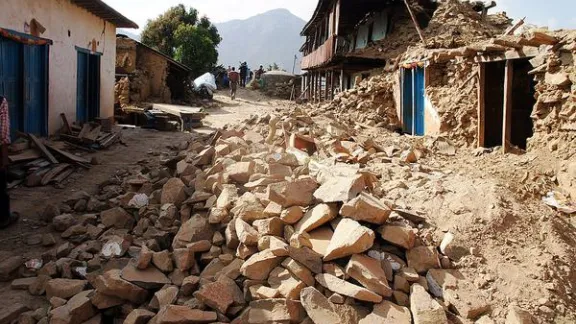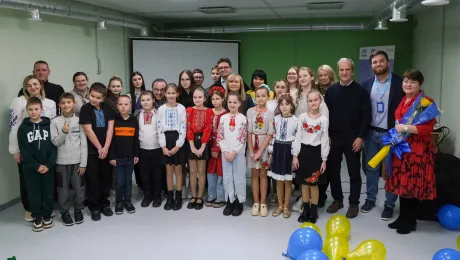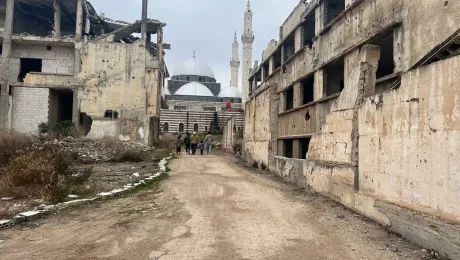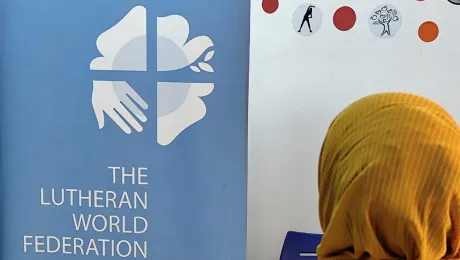
Caption: A street in Dhusel village, Lalitpur, which has been entirely destroyed by the April Earthquake. Most people had just started to pick up the pieces when the second tremor hit. Photo: LWF/ C. Kästner
LWF Nepal earthquake relief to 44,000 people
(LWI) - An earthquake of the magnitude of 7.4 on the Richter scale caused destruction in Eastern and Central Nepal on 12 May. The epicenter was located close to Mount Everest on the Chinese border in the already affected Sindhupalchowk and Dolkha districts. The earthquake shook a country still in shock from the magnitude 7.8 earthquake on 25 April, which killed more than 8,000 people and destroyed more than 70,000 houses.
All LWF staff, including two teams who had been doing assessment work in rural areas of Sindhupalchowk and Rasuwa, are well and accounted for. A team which was out on an assessment mission in Sindhupalchowk district east of Kathmandu, however, faced challenges getting back to the office as the road was blocked by a land slide. “Our relief operations continue,” LWF Humanitarian Coordinator Roland Schlott says. “Despite the fear this most recent quake has caused among the Nepali population, all our staff are in the office and working.”
Relief goods for almost 9,000 households
LWF Nepal is the leading partner within the ACT Alliance Nepal response. “We have the largest reach and capacity and will take on the additional work necessary to address the needs of the people affected by yesterday’s earthquake,” Schlott adds. “We are there, we will do it.”
To date LWF has distributed relief items to 8,957 households, covering a total of 43,703 individuals in Bhaktapur, Lalitpur, Rasuwa, Sindhupalchowk and Kathmandu districts. Assessment teams have been sent to Kavre and Gorkha districts. “We have distributed about 25 euro worth of relief goods per family,” LWF Nepal Emergency Response Manager Gopal Dahal explains. “In the distributions we handed out 96 tons of rice, 24 tons of lentils, 6,100 tarpaulin sheets, 7,000 blankets and 1,200 bars of soap, and many other items, such as solar lamps, hygiene packs and food for children and the elderly.” Some 36 Nepali volunteers, many of them young people, have been recruited to assemble relief parcels and help with distributions in Kathmandu and Bhaktapur.
Shelter most urgent
The Nepalese government has asked the LWF to take a seat on its emergency coordination group. “When the 25 April earthquake happened, we were among the very few international NGOs on the ground. We set up emergency operations on day one,” Dr Prabin Manandhar, LWF country director said. Having worked in Nepal for over three decades, “we have longstanding relationships and are a recognized partner of the government in disaster response, refugee assistance and rights based empowerment work.”
While considered an aftershock, the new quake on 12 May caused damage in areas less severely affected by the previous earthquake. “With the monsoon starting in a few weeks, shelter is the most urgent need now,” Schlott says. “The second earthquake has collapsed many houses which were already damaged. People are frightened and weary, since 25 April there have been more than 50 aftershocks and tremors of a magnitude of 4.5 and above.“
In the urban centers, including the capital Kathmandu, many people have started camping outside again, although they have houses to go back to. “Until the aftershocks decline in intensity and frequency, many will prefer to brave the elements rather than risk being trapped in a building,” Schlott adds. “The reality, however, is that no-one can predict earthquakes.”


